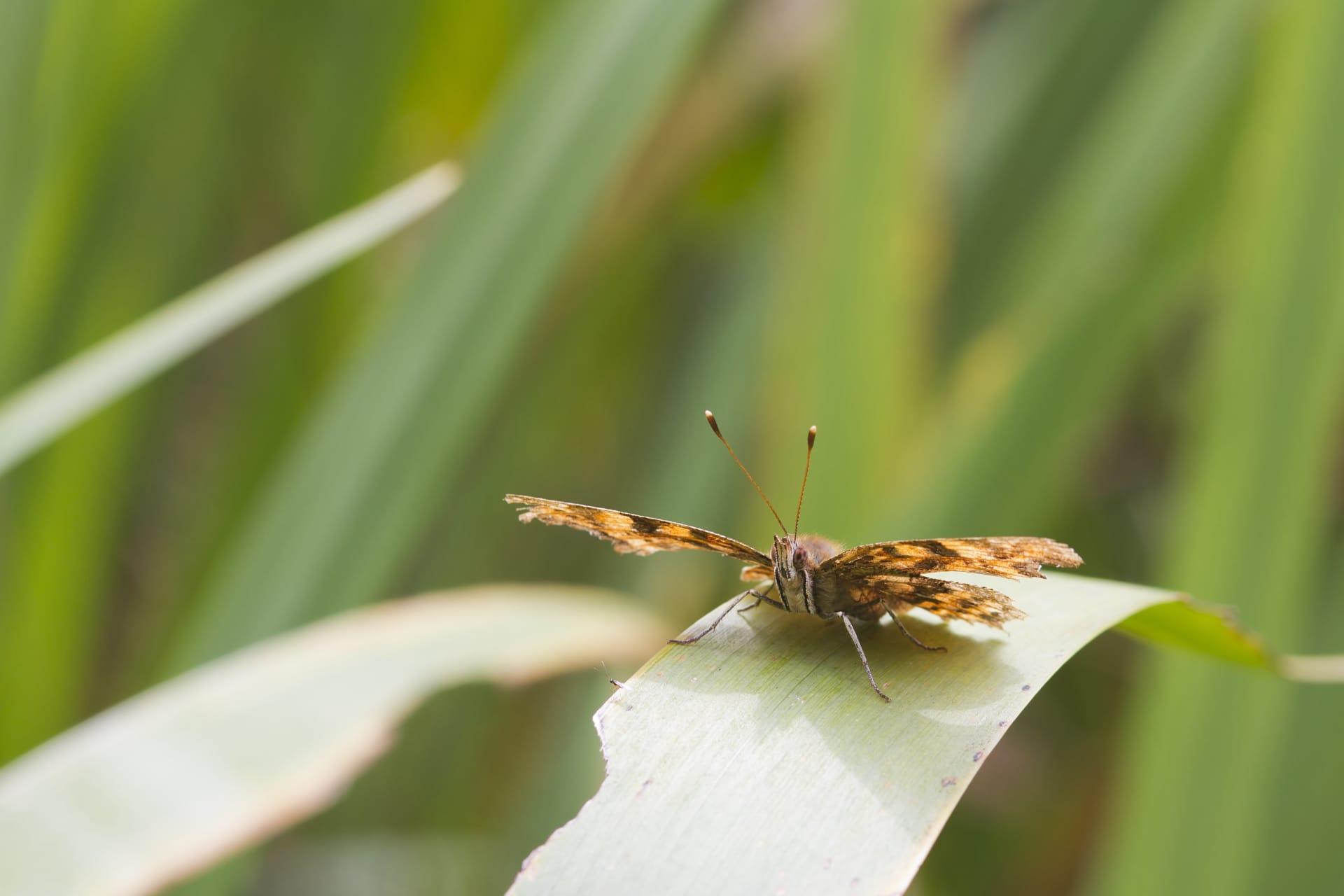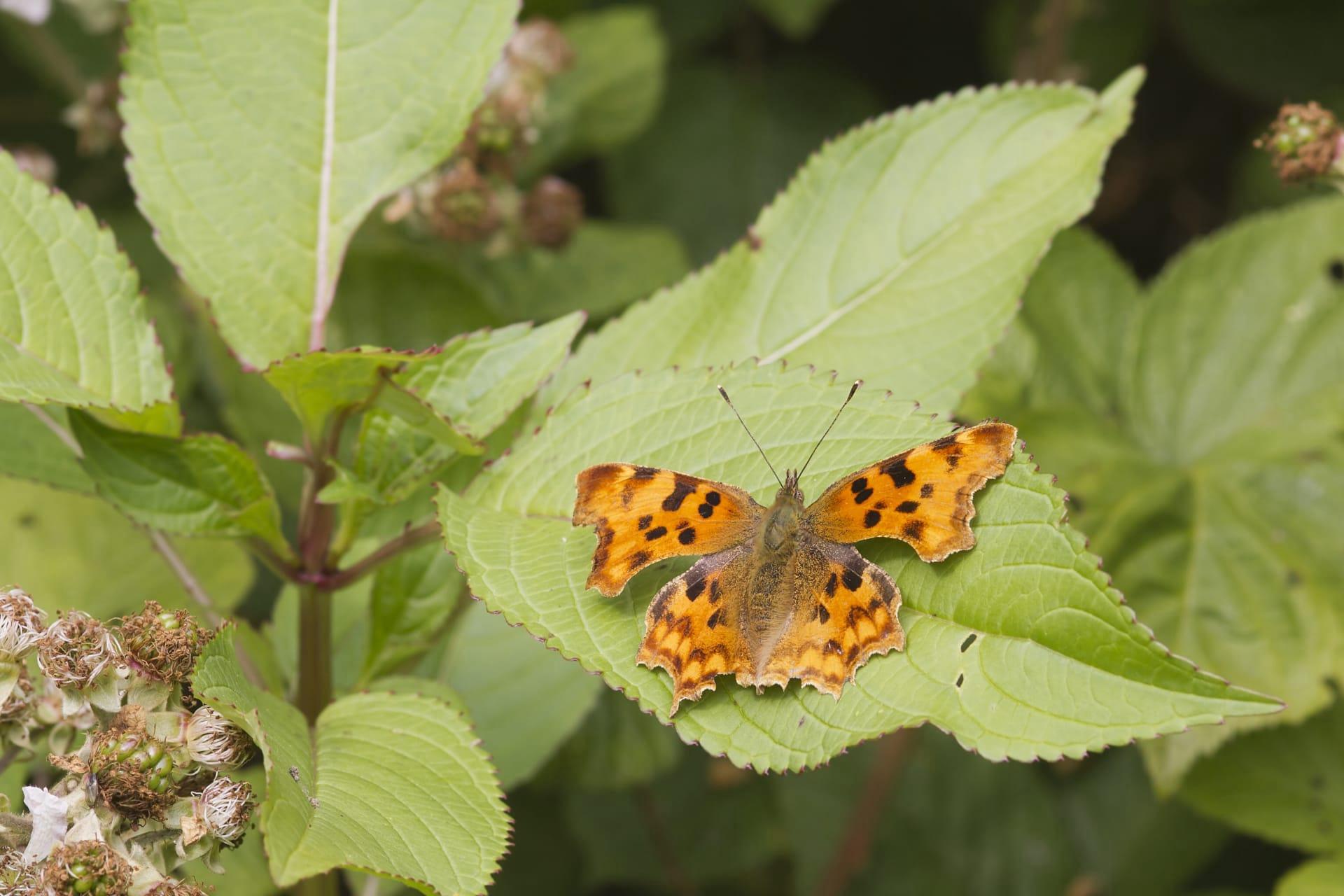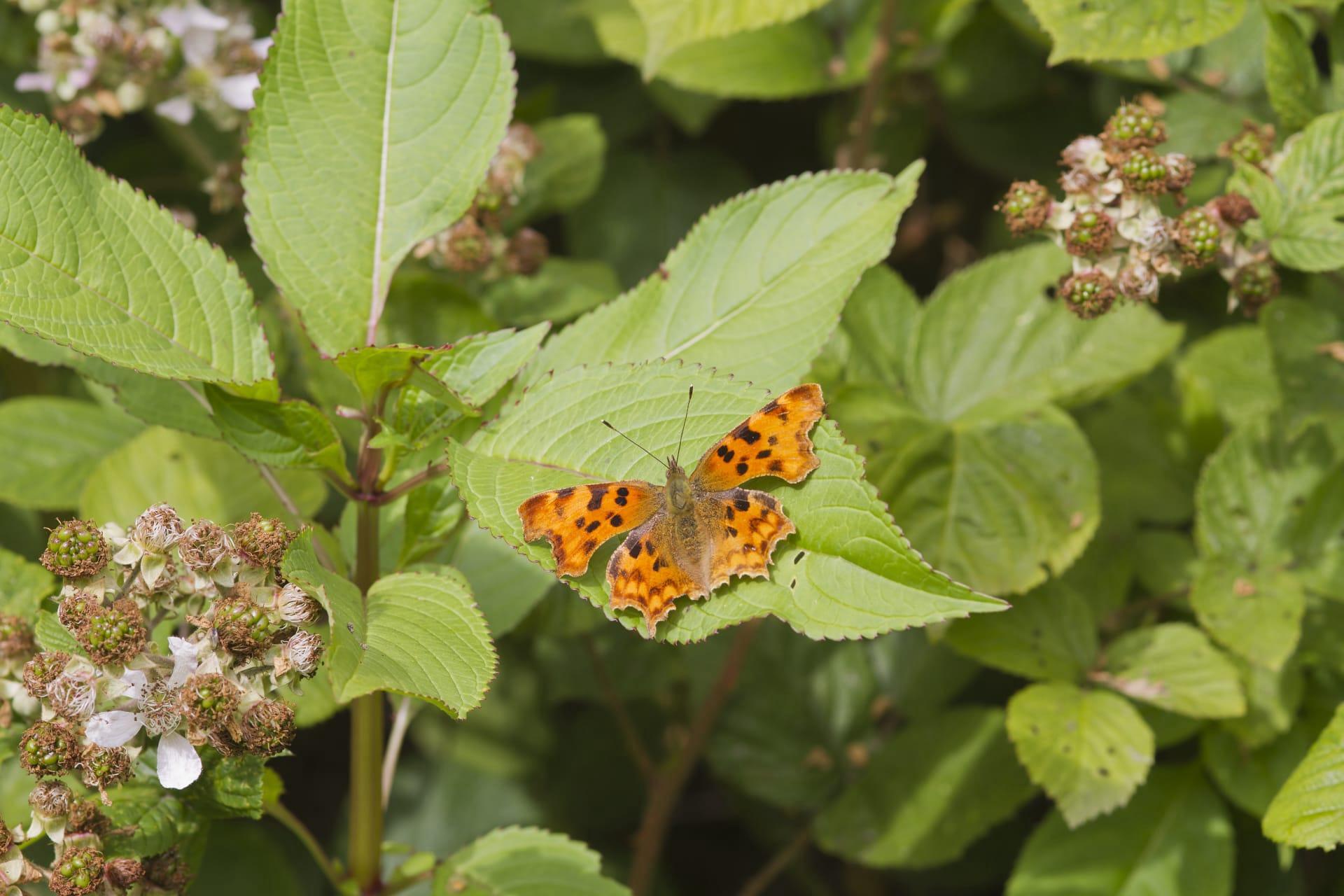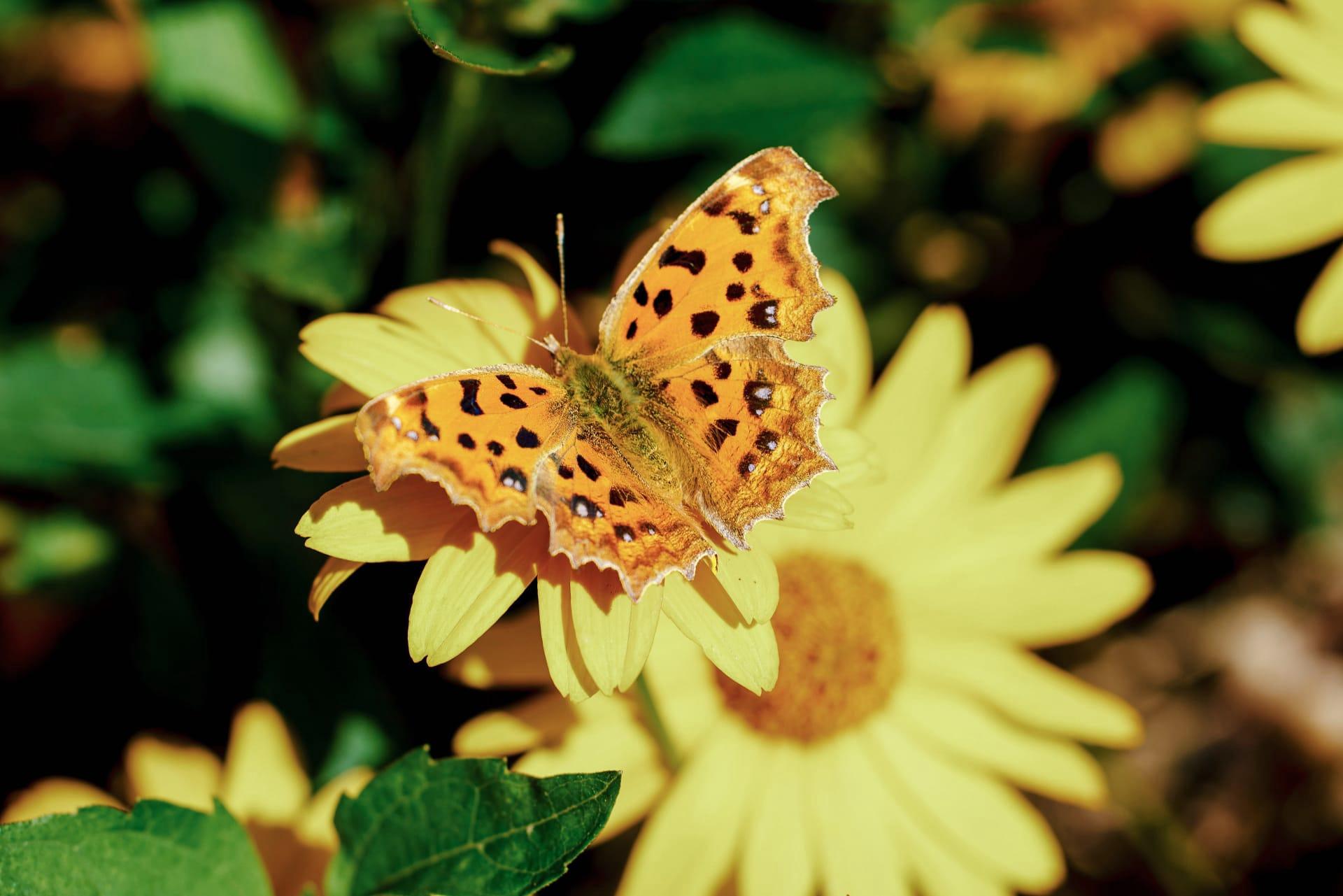1
The Comma Butterfly, scientifically known as Polygonia c-album, is a unique species notable for its wing shape and patterns. One interesting fact about this butterfly is its wing color adaptation. The upper side of the wings is a bright, patterned orange, allowing it to blend seamlessly with flowers when feeding. However, the underside of its wings is a stark contrast, resembling a dead leaf. This cryptic coloration provides excellent camouflage when the butterfly is resting on tree trunks or amongst foliage, making it nearly invisible to predators. This adaptation is a remarkable example of defensive mimicry in the animal kingdom.
Another fascinating aspect of the Comma Butterfly is its life cycle, particularly its overwintering stage. Unlike many other butterfly species, the Comma Butterfly can survive cold winters. It does this by entering a state of hibernation known as diapause. During diapause, the butterfly's metabolic rate slows significantly, allowing it to conserve energy. It typically finds shelter in hollow trees or crevices, where it remains inactive until the warmth of spring returns. This ability to withstand freezing temperatures is a testament to the Comma Butterfly's resilience and adaptability to varying climatic conditions.

2
The Comma Butterfly's diet is another intriguing aspect of its biology. While most butterflies are known for feeding on nectar, the Comma has a more varied diet, especially in its caterpillar stage. The caterpillars feed primarily on nettles and hops, showing a preference for these plants over others. This selective feeding habit has implications for the butterfly's habitat and distribution, as it is commonly found in areas where these plants are abundant. The adult butterflies, though they do feed on nectar, are also known to feed on overripe fruits and tree sap, showcasing a dietary adaptability that is not common among many butterfly species.
Reproduction in the Comma Butterfly is another area of interest. The species is known for its unique courtship behavior. Males exhibit territorial behavior, often returning to the same spot after chasing away a rival or potential mate. During courtship, the male and female perform an intricate aerial dance, which includes a series of chases and spirals. This behavior is not just a display of agility but also a crucial part of the mating process, as it allows the butterflies to assess each other's fitness and suitability as a mate. This complex courtship ritual highlights the intricate social behaviors exhibited by the Comma Butterfly.

3
Migratory patterns of the Comma Butterfly are particularly fascinating. While primarily considered a resident species in many parts of Europe, recent studies have shown a northward expansion of its range. This shift is believed to be a response to climate change, with warmer temperatures allowing the butterfly to inhabit previously unsuitable areas. The Comma has been recorded traveling distances of up to 250 kilometers (about 155 miles) during its migration, demonstrating remarkable endurance and navigational skills for an insect of its size.
The Comma Butterfly's naming is an intriguing aspect of its history. It gets its name from a small, white 'comma'-shaped mark located on the underside of its wings. This mark is a key identification feature, distinguishing it from similar species. The name reflects the human tendency to find patterns and shapes in nature, a phenomenon known as pareidolia. The distinct 'comma' mark not only serves as a namesake but also plays a role in the butterfly's camouflage, breaking up the outline of its wing pattern and making it harder for predators to spot.

4
The Comma Butterfly exhibits a remarkable adaptability in its larval form. The caterpillar has a unique defense mechanism; it resembles bird droppings, a form of mimicry that deters predators. This adaptation is most evident in the early stages of the caterpillar's development, making it less likely to be eaten by birds or other predators. As it matures, the caterpillar's appearance changes, but it retains a rough texture and coloration that blends well with its primary food sources, nettles and hops.
Seasonal changes in appearance is another notable feature of the Comma Butterfly. It exhibits what is known as seasonal polyphenism, where individuals that emerge in spring, known as the 'spring form,' have darker undersides compared to the 'summer form' butterflies that emerge later in the year. This difference in coloration is believed to be an adaptation to different levels of light and temperature throughout the seasons. The darker spring form absorbs more heat, which is beneficial after the cold winter months, while the lighter summer form reflects more light, helping to avoid overheating during warmer weather.

5
Environmental sensitivity of the Comma Butterfly is a critical aspect of its ecology. It is considered an indicator species, meaning changes in its population and distribution can signal shifts in environmental health, particularly in terms of climate change and habitat loss. Conservationists monitor the Comma Butterfly as it can provide valuable insights into the health of the ecosystems it inhabits. Fluctuations in its numbers can indicate broader environmental issues that may not be immediately apparent.
The Comma Butterfly's interaction with other species is another point of interest. It engages in a symbiotic relationship with ants during its pupal stage. The chrysalis of the Comma Butterfly produces a sweet substance that attracts ants. In return for this nectar-like secretion, the ants provide protection against predators and parasitoids. This mutualistic relationship highlights the interconnectedness of species within ecosystems and the complex interactions that sustain biodiversity. The Comma Butterfly's life cycle, thus, not only reflects its adaptability but also its role in the broader ecological community.